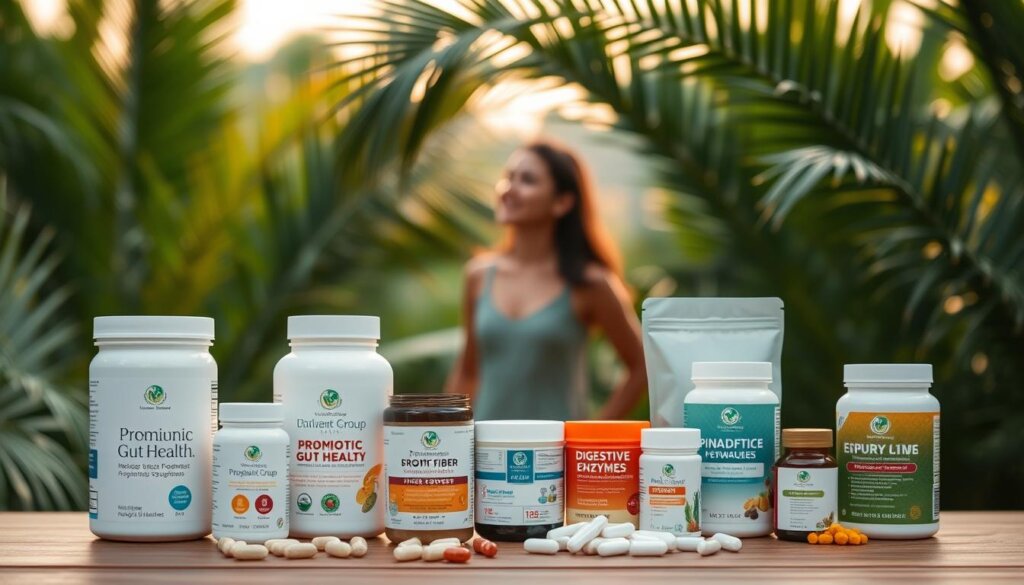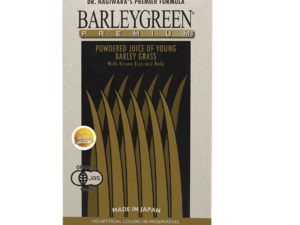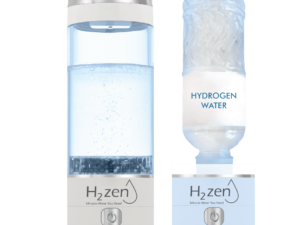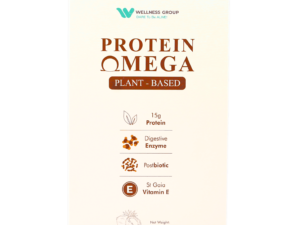Did you know 70% of Malaysians who take probiotics overlook a simple dietary addition that could double their gut health benefits? While most focus on avoiding harmful interactions—like calcium blocking iron absorption—few realize some nutrients actually enhance each other’s effects.
Combining supplements requires careful thought. Many worry about unintended consequences, such as reduced effectiveness or wasted investments. Yet emerging research reveals a surprising truth: fiber and probiotics aren’t competitors—they’re collaborators.
Fiber acts as fuel for probiotics, helping beneficial bacteria colonize the digestive system. This partnership creates an environment where both can thrive, amplifying results for digestive wellness. Experts now call this relationship a “match made in microbiome heaven.”
This guide breaks down the science behind why these two work better together. Readers will learn practical strategies to optimize their supplement routines while avoiding common pitfalls. From absorption rates to long-term gut health benefits, every angle gets explored.
Key Takeaways
- Fiber supports probiotic effectiveness by feeding beneficial bacteria
- Strategic combinations maximize digestive health investments
- No significant interference occurs between quality fiber and probiotic supplements
- Synergy between nutrients enhances overall gut function
- Proper timing and dosage optimize results
Understanding Fiber and Probiotics

Click to LEARN MORE
Though humans have consumed plant-based foods for millennia, scientists only defined dietary fiber in 1953. This nutrient includes indigestible plant parts that reach the colon intact. Today, research confirms these compounds work with live bacteria to shape digestive health.
What Makes Fiber Unique?
Dietary fibers fall into two categories. Soluble types dissolve in water, forming a gel that slows digestion. Oats and citrus fruits excel here. Insoluble fibers add bulk to stool—think whole grains and cauliflower. Both types feed gut microbes but work differently.
| Fiber Type | Key Function | Top Sources |
|---|---|---|
| Soluble | Forms gel to regulate sugar absorption | Apples, beans, barley |
| Insoluble | Adds bulk to support regularity | Nuts, green beans, wheat bran |
Probiotics: More Than Just Bacteria
Probiotics are specific strains of beneficial microbes. Lactobacillus aids dairy digestion in yogurt cultures. Bifidobacterium targets bowel discomfort in fermented foods. These organisms partner with fibers to strengthen gut barriers and immune responses.
Choosing the right combination depends on personal needs. A breakfast of oatmeal with yogurt demonstrates how fibers and probiotics can work together naturally. This synergy forms the foundation for advanced gut health strategies.
Benefits of Combining Fiber with Probiotics
Modern nutrition science reveals an extraordinary teamwork story happening in our digestive systems. When specific fibers meet live cultures, they create a powerhouse duo that transforms gut function.
Enhanced Gut Health and Digestive Support
Prebiotic fibers like FOS and GOS act as superfuel for probiotics. Found in onions, bananas, and wheat, these compounds help beneficial bacteria multiply faster. A 2023 study showed colonies grow 42% larger when paired with adequate fiber intake.
The fermentation process creates short-chain fatty acids. These compounds:
- Strengthen intestinal lining
- Reduce inflammation markers
- Block harmful pathogens
Scientific Evidence and Prebiotic Effects
Research confirms this combination outperforms solo use. One trial demonstrated 73% higher survival rates for probiotic strains when taken with prebiotics. The table below shows top-performing fiber-probiotic pairs:
| Prebiotic Fiber | Natural Sources | Key Benefits |
|---|---|---|
| Fructooligosaccharides | Garlic, asparagus | Boosts Bifidobacterium |
| Galactooligosaccharides | Lentils, chickpeas | Enhances mineral absorption |
| Inulin | Chicory root, leeks | Supports regularity |
For those considering targeted supplementation, combining these nutrients mimics nature’s design. Daily meals containing both elements – like yogurt with banana – offer an easy starting point for better digestive outcomes.
Should I take fiber with probiotics?
Gut health thrives on partnerships, and the combination of specific nutrients creates powerhouse results. When paired strategically, these elements transform digestive wellness through natural synergy.
How Fiber Boosts Probiotic Effectiveness
Beneficial microorganisms require specific conditions to establish colonies. Soluble fibers like inulin and beta-glucan act as premium fuel sources, helping probiotic strains survive stomach acids. Research shows this pairing increases bacterial survival rates by up to 68% compared to standalone use.
The relationship works like a garden ecosystem. Fiber prepares the soil, while probiotics become the seeds. Together, they:
- Strengthen intestinal barrier function
- Enhance nutrient absorption efficiency
- Support immune system modulation
| Fiber Type | Role in Gut Health | Best Probiotic Pairings |
|---|---|---|
| Inulin | Feeds Bifidobacterium strains | Floradapt formulations |
| Pectin | Boosts Lactobacillus growth | Yogurt cultures |
| Resistant Starch | Promotes microbial diversity | Soil-based organisms |
Gradual introduction helps avoid digestive discomfort. Start with small portions of fiber-rich foods alongside probiotic supplements to assess tolerance. Most individuals adapt within 2-3 weeks as gut flora adjusts.
This nutritional teamwork maximizes digestive investments. Without adequate fiber, even high-quality probiotics might work temporarily before exiting the system. Regular intake of both creates lasting improvements in bowel regularity and immune responses.
How to Integrate Fiber and Probiotics Safely

Click to LEARN MORE
Smart integration turns separate nutrients into a gut-nourishing team. Proper strategy helps avoid common missteps while maximizing digestive benefits.

Supplement Dosage and Timing Considerations
Begin with small doses to let your body adapt. A starter probiotic dose of 1 billion CFUs helps establish microbial balance. Gradually increase fiber intake toward daily targets: 22-28g for women, 28-34g for men.
| Supplement Type | Optimal Timing | Key Benefit |
|---|---|---|
| Fiber | 30 minutes before meals | Stabilizes blood sugar |
| Probiotics | Before bedtime | Enhances overnight colonization |
Nighttime probiotic use aligns with the body’s natural repair cycles. Pairing fiber supplements with meals supports gradual nutrient release.
Meal Planning and Gradual Integration
Combine whole foods and supplements for best results. Add chia seeds to morning yogurt or blend oats with kefir. Increase fiber portions weekly to prevent bloating.
Listen to your body’s signals. Some people thrive with morning fiber, others prefer evening doses. Consistency matters more than perfect timing during the adjustment phase.
Quality supplements make integration easier. Look for third-party tested products containing both prebiotic fibers and shelf-stable probiotics. Always consult healthcare providers when altering your diet significantly.
Probiotic and Fiber-Rich Foods for a Balanced Diet
Building a thriving gut ecosystem begins at the grocery store. Natural sources of probiotics and fiber work together like ingredients in a recipe – each playing distinct roles while creating something greater than individual parts.
Nature’s Bounty vs Lab-Made Solutions
Fermented foods like kimchi, yogurt, and natto deliver live cultures alongside vitamins and enzymes. These traditional options often contain complementary nutrients – kimchi provides vitamin K2, while Greek yogurt offers calcium for bone health.
Commercial fiber supplements fill gaps in modern diets. Products like Benefiber (wheat dextrin) or Citrucel (methylcellulose) help individuals reach daily targets without digestive discomfort. The table below shows key differences:
| Food Type | Key Benefits | Examples |
|---|---|---|
| Fermented Foods | Live cultures + natural co-factors | Sauerkraut, kefir, tempeh |
| Fiber Supplements | Precise dosing + convenience | Psyllium husk, inulin powders |
Colorful vegetables and whole grains form the foundation of gut-friendly eating. Purple cabbage feeds different bacteria than brown rice, while quinoa offers complete protein alongside prebiotic fiber.
For optimal results, pair fermented items with fiber-rich plants. Try adding kimchi to oatmeal or mixing kefir with chia seeds. This approach mimics traditional diets that naturally combine both elements.
Wellness Group Malaysia: Your Partner in Gut Health

Navigating gut health supplements becomes simpler with expert guidance. Wellness Group Malaysia combines scientific knowledge with local understanding to help individuals achieve digestive balance. Their team bridges the gap between what people know about probiotics fiber supplements and practical, personalized solutions.
Your Gateway to Professional Support
Reach Wellness Group through WhatsApp at +60123822655 for instant advice. Their specialists operate during convenient hours:
| Days | Operating Hours |
|---|---|
| Weekdays | 9:30 AM – 6:30 PM |
| Weekends | 10 AM – 5 PM |
This schedule accommodates busy lifestyles while ensuring access to quality health support. Quick consultations help users avoid common supplement mismatches.
Tailored Solutions for Malaysian Lifestyles
Wellness Group stands out through curated selections and cultural awareness. Their approach includes:
- Third-party tested probiotics fiber blends
- Usage guides matching local eating patterns
- Combinations that complement traditional dishes
One customer shared:
“They explained how to pair supplements with my nasi lemak breakfast routine – game changer!”
The team educates users about timing and dosage rather than just selling products. For those new to gut health supplements, this guidance prevents wasted investments and enhances results. Whether optimizing existing routines or starting fresh, Wellness Group turns confusion into confidence.
Conclusion
The journey to optimal gut health becomes clearer when nutrients work in harmony. Combining specific dietary components creates a self-sustaining ecosystem within the digestive system. This partnership allows beneficial microorganisms to flourish while supporting efficient nutrient absorption.
Natural food pairings and quality supplements amplify results when used strategically. Fermented items like tempeh gain potency alongside fiber-rich ulam herbs common in Malaysian cuisine. Gradual integration helps the body adapt without discomfort.
Emerging research confirms what traditional diets have long practiced. Prebiotics act as catalysts, while live cultures transform gut environments. Together, they form a defense system against modern dietary challenges.
For personalized advice, Wellness Group Malaysia offers tailored solutions blending science with local eating habits. Their expertise helps residents navigate supplement choices while honoring cultural food traditions. This balanced approach turns nutritional theory into daily practice.
FAQ
Can combining dietary fiber and probiotics improve gut health?
Yes! Pairing these supports a balanced microbiome. Certain fibers act as prebiotics, fueling beneficial bacteria like Lactobacillus and Bifidobacterium. This synergy may enhance digestion, reduce inflammation, and strengthen immune function.
What’s the best time to take fiber and probiotic supplements?
Timing matters. Many find mornings with meals effective, as food buffers stomach acid, helping live bacteria survive. Gradually introduce both to avoid bloating. Brands like Renew Life or Garden of Life offer combined formulas for convenience.
Are fermented foods enough, or should supplements be added?
Fermented foods like kimchi or kefir provide natural probiotics, while whole grains and vegetables offer fiber. Supplements like Align or Metamucil help fill gaps. A mix of both often works best for optimal gut support.
Are there risks to taking fiber and probiotics together?
Overdoing it may cause gas or cramps initially. Start with small doses and hydrate well. Those with IBS or sensitivities should consult a doctor. High-quality options from Wellness Group Malaysia minimize additives that trigger discomfort.
How does soluble fiber specifically help probiotics thrive?
Soluble fibers—like oats or psyllium—dissolve into gel, slowing digestion. This feeds good bacteria in the colon, boosting their growth. Insoluble fibers (e.g., broccoli) add bulk but work differently. Both types play unique roles in gut harmony.
Why trust Wellness Group Malaysia for gut health solutions?
With expert guidance and rigorously tested products, they tailor plans to individual needs. Their team stays updated on research, ensuring supplements like Probiology Gut+ or Physician’s Choice align with the latest science for lasting benefits.






